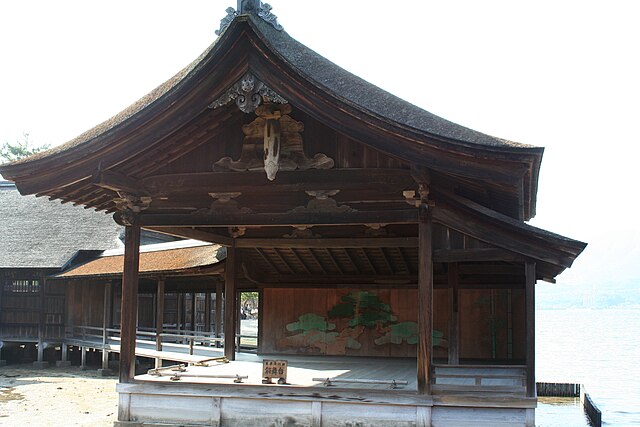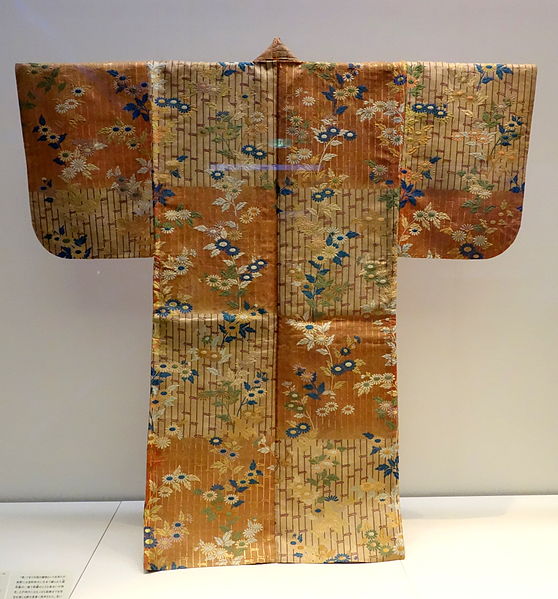Dengaku (田楽) were rustic Japanese celebrations that can be classified into two types: dengaku that developed as a musical accompaniment to rice planting observances, and the dengaku dances that developed in conjunction with sangaku. The dengaku celebrated for rice planting was performed by villagers either at the New Year or during the planting season in early summer. It was only in the 14th century that these dances were brought to the cities and incorporated into Noh theater, notably by the playwright and actor Kan'ami. The instrument of dengaku is the sasara, a wooden percussive instrument clapper, though there are other instruments that can be used.
Dengaku in Ōji, Tokyo, 2014.
Noh is a major form of classical Japanese dance-drama that has been performed since the 14th century. Developed by Kan'ami and his son Zeami, it is the oldest major theater art that is still regularly performed today. Although the terms Noh and nōgaku are sometimes used interchangeably, nōgaku encompasses both Noh and kyōgen. Traditionally, a full nōgaku program included several Noh plays with comedic kyōgen plays in between; an abbreviated program of two Noh plays with one kyōgen piece has become common today. Optionally, the ritual performance Okina may be presented in the very beginning of nōgaku presentation.
Noh performance at Itsukushima Shrine
World's oldest Noh stage at Miyajima
Karaori garment, Edo period, 18th century, bamboo and chrysanthemum design on red and white checkered ground
Kanze Sakon [ja] (1895–1939), head (sōke) of Kanze school





![Kanze Sakon [ja] (1895–1939), head (sōke) of Kanze school](https://upload.wikimedia.org/wikipedia/commons/thumb/9/98/KANZE_Sakon_Ataka.jpg/640px-KANZE_Sakon_Ataka.jpg)